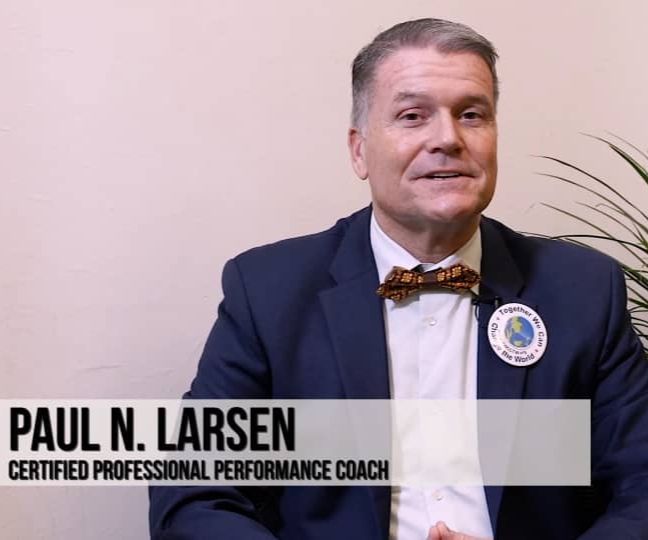How To Provide A Safe Workplace For Temp Employees

Photo by sol @ unsplash
If you own a company, you’d probably encounter the need for additional workers to fit your needs and substitute those under leave. These employees are called temporary workers or temps, which can be hired through a staffing agency or directly by the company.
When it comes to employee safety and protection, temp workers are more likely to suffer damage on the job than your regular employees.
Unlike them, temps have less to nothing incentives to ensure safety. Also, they are often under-trained and unfamiliar with the working environment, which makes them prone to physical injuries.
On top of that, it’s worth noting that temp workers have rights to worker’s compensation. If one of your temp workers gets hurt in an unsafe and unprotected working environment, they have the right to receive damages to compensate for their loss. In addition, you may check out this informative post to guide you about their right to workers’ compensation.
But first, who is liable to provide the damages for employees? Is it your company or the staffing agency? The answer is that the contract between you and the staffing agency is straightforward without any room for ambiguity.
With the increasing need for temporary workers, you should know the following strategies to provide a safe work environment for them:
1. Always Maintain Consistent Communication
According to experts, the host employer and the staffing agency need constant communication. However, it’s worth noting that a simple telephone call and short email will not be enough to be effective and efficient.
Although these two can provide consistent information exchange between both parties, it’s a must for a staffing agency to conduct regular visits and speak with their staff. On the other hand, the host employer should communicate and provide necessary reports about the temp worker. These include the injuries employees may have suffered or any changes in the duty.
Read more: Enhance Your Communication Skills
Also, make sure that they prioritize safety over production quota, know when to speak, when necessary, and report any possible dangers on the job.
2. Always Conduct Proper Training
As a host employer, it is your sole duty and responsibility to properly train temp workers without rushing it and neglecting other critical information. Working in an unfamiliar environment is dangerous for them, so it’s crucial to discuss the areas they should be concerned about properly.
Also, it would be best to train them the way you prepare your regular employees. Teach them the proper ways to do their work safely and the preventive measures around the facility.
Here are some considerations you might want to include in your training:
- Language training they can understand;
- Safety procedures for operating equipment, including emergency stops and how to address malfunction;
- Procedures for proper handling of chemical hazards;
- Emergency procedures include the location of exit points and emergency equipment, such as fire extinguishers and first aid kits.
It will help you avoid being sued for misconduct and save you possible expenses related to accidents. Also, don’t forget to include them when you have safety meetings with your regular employees.
3. Document The Training
Training is the most common reason why employees suffer from work-related injuries. If a temp worker is injured, you’d probably be asked by insurance companies and inspectors to show a document proving that you have given proper training. If you can’t present any of those, you’re in great danger.
With that said, it would be best to document every training you provide. You may give certification for those who attended or take pictures and videos during discussion. Also, include the following details when you transfer it into files:
- List of participants and their signatures;
- Date of training;
- Name of the trainer;
- Training description, including the summary of the topics given and discussed;
- Method of training evaluation, such as quizzes, practical exams, and performance tests or skill demonstration;
Compile all of these necessary details so you have solid proof that you have never been negligent in providing proper training for all of your employees, including the temp workers.
4. Take A Risk Assessment
As a host employer, it would be best to identify and manage all potential hazards in your company. Then, evaluate them to reduce the likelihood of someone getting injured.
Here are the possible risks you need to learn:
Natural Hazards
These include flooding, landslides, earthquakes, volcanic eruptions, storms of all kinds, tornados, etc.
Human-Caused Hazards
These include workplace accidents, structural collapse or failure, transportation damage, violence, etc.
Technological Hazards
These include an electric power outage, water service failure, data corruption, pollution control, HVAC-related issues, etc.
Furthermore, make sure to comply with the standards set by your local government.
5. Prepare Emergency Action Plans
Emergency action plans are a helpful tool during emergencies. They provide correct and proper steps, policies, and procedures for addressing unfortunate and unforeseen cases. In addition, make sure that your temporary workers have access to these files anytime they need them.
Also, these action plans should consist of broader and non-task-specific emergency plans, such as what to do and how to react during natural and artificial disasters.
6. Provide Personal Protective Equipment
Usually, workers are required to bring their protective gear to work. However, most of them would probably get defective equipment. For example, a construction staff may bring broken and non-functional headgear that may have previously suffered an impact.
So, make sure to check their belongings and provide them with the right protective gear. Also, don’t forget to educate them on the correct way of handling and using this equipment and make sure they understand it well.
You may provide them with video tutorials, physical demos, and learning materials like company manuals. It will ensure that every employee is well-equipped with significant knowledge to prevent any catastrophic outcomes.
7. Use Warning Signs And Labels
Since temp workers are not familiar with the area, it’s natural for them not to memorize every detail you present during their training. So, it’s vital to implement and normalize warning signs and labels around each facility. It will not only protect your temporary permanent workers from dangers but also allow them to work with ease.
On top of that, using signs and labels is an excellent way to show inclusivity towards foreign workers and clients. It’s a universal language that allows everyone to communicate with each other regardless of where they live in the world.
In addition, make sure that these labels are explicit and visible and written in a language they can understand. Also, provide reminders about emergency procedures, especially when using machinery or operating without proper PPE.
Final Words
Temporary workers can offer many benefits to your company, such as providing additional support and alleviating staff shortages even for a short time. However, unlike your permanent employees, they are more susceptible to dangers due to an unfamiliar working environment.
 Infographic by Leaderonomics: How To Provide A Safe Workplace For Temp Employees
Infographic by Leaderonomics: How To Provide A Safe Workplace For Temp Employees
For this reason, it’s essential to keep your area safe and worker-friendly. You may use the following strategies presented above to maintain a safe work environment and keep all of your employees safe, regardless of their employment status.
About Author: Maxwell Burton is a professional safety coordinator. He has been helping businesses provide a safe workplace for more than ten years. Also, Maxwell shares his expertise by writing blogs and guest posts online. He enjoys walking around with his dogs and cooking during his free time.
Be sure to watch the media below:
If you want to read more on the topic above, there is a good compilation of articles in this amazing learning app called Necole. Necole is a state of the art learning platform that curates personalised learning just for you. **SPECIAL OFFER - Use this code ABETTERME and get a 5% discount on your subscription to Necole. To find out more about Necole or to subscribe, click here.
Functional
This article is published by the editors of Leaderonomics.com with the consent of the guest author.







